
- •Suleyman Demirel University
- •Suleyman Demirel University Faculty of Engineering
- •Suleyman Demirel University
- •Task To complete Diploma thesis
- •Project consultation pointing to relevant chapters
- •Thesis prepaRation scheduleS
- •Annotation
- •Аннотация
- •Related works
- •2.1 What is e-assessment?
- •2.2 Why might e-assessment be so useful?
- •2.3 What can e-assessment do for Learning and Teaching?
- •3.1 Python
- •3.2 Django
- •3.3 SqLite
- •3.3.1 What is sqLite?
- •3.3.2 Distinctive Features Of sqLite
- •Variable-length records
- •3.4 Jquery
- •Features
- •Including the library
- •Usage styles
- •JQuery plug-ins
- •Variations
- •Limitations
- •Vertical control limitations
- •Advantages
- •4.1 Dbms
- •4.2 Working principle
4.2 Working principle
Firstly, user see the window with some about text and 2 buttons: Register and Login

Pic.8 Main page
Registered user can be either teacher or student.
Students see the list of the tests to pass or which has been passed.
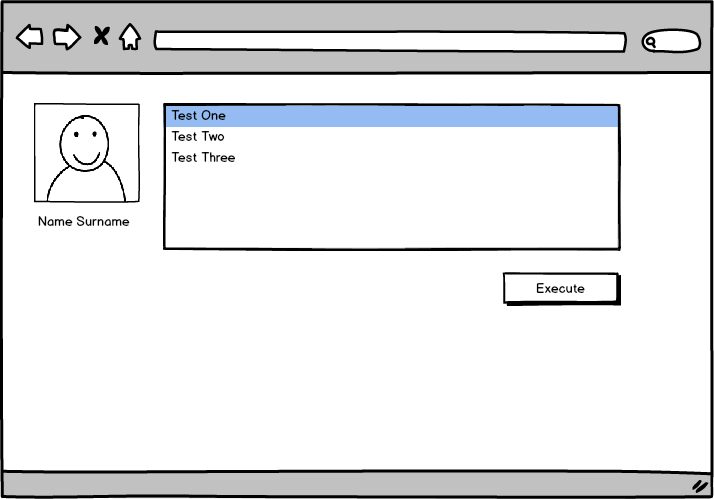
Pic.9 Student main page
After he choosed the test to pass the test runs. Display only 1 question per page.
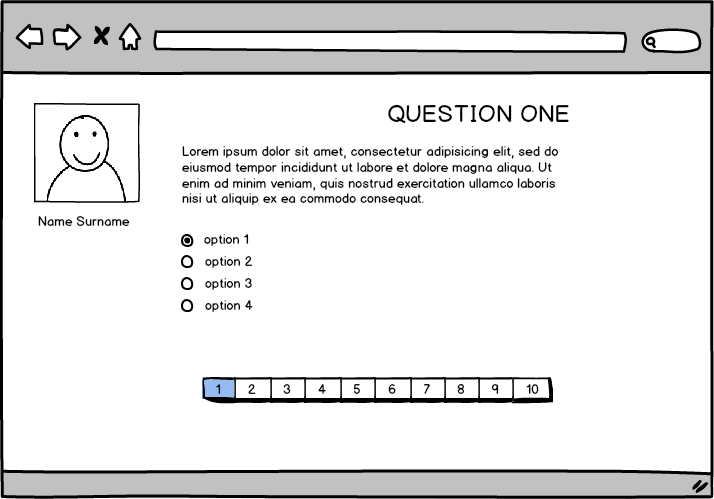
Pic.10 Student passes test
Then after all the questions passed student sees his results
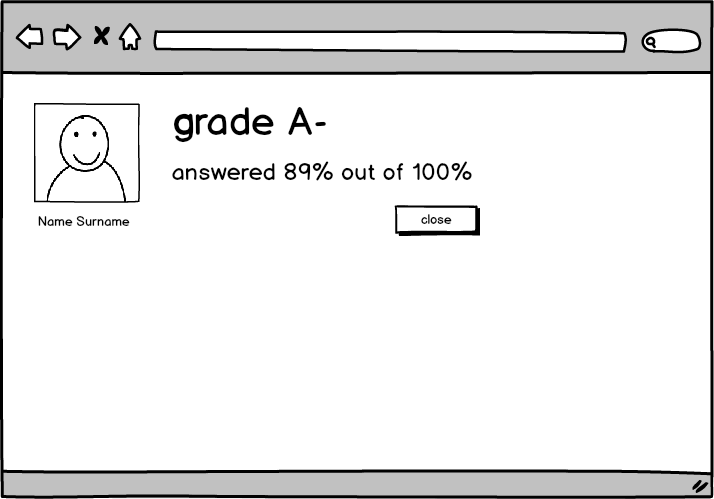
Pic.11 Student Test result
If the teacher is logged in he see the same page as the student does, but the tests is listed are which has been created by the teacher, not should to pass
Pic.12 Teacher main page
After he executes the test he can see the list of the students who passed and should pass the test. Also he can remove/edit(if not published) the test, or create a new one

Pic.13 Teacher test executed
If teacher create or edit the test it see the same window as the student does but it now editable
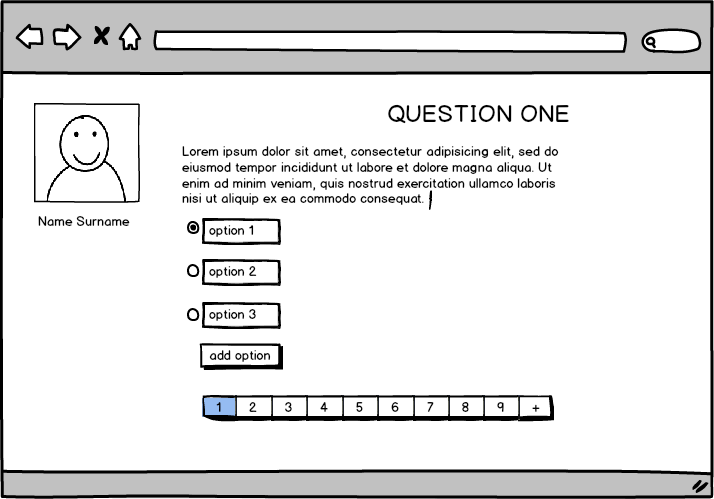
Pic.14 Question edit page
The last step in creation of the test is configuration: list of the students to pass, deadline and etc.
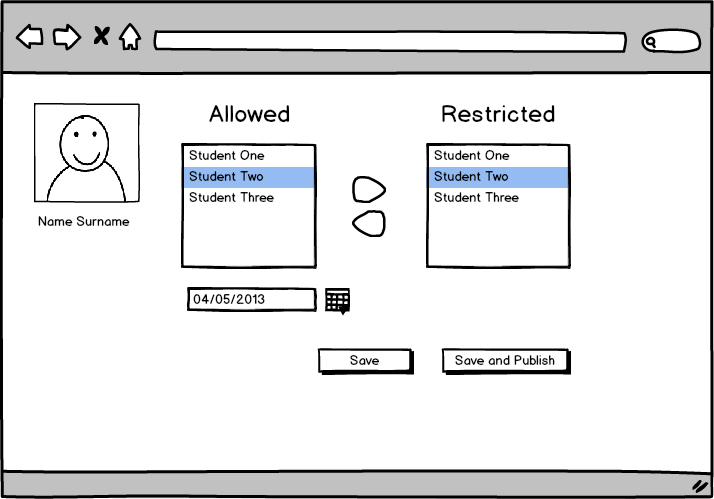
Pic.15 Test configuration
Conclusion
As I said in the preface, I want for our country have the standard system for any computer-based testing, with a big united database. In my opinion together me can do more, than separated, it always was like this, and should always be. Only if will join our ideas, power and knowledge, we can became the leader in educational state of the world. Testing is only the first step, if it will be go on, it should became a part of the great online educational system for distance learning.
This project is related to become a small part, a small step to become our country education system a little better and perspective.
I saw a lot of different testing servicesin my research, and the main disadvantage of all of them is was the database, fullfilling by a small group of people. Teachers should share their knowledge for a while, to became our education more qualified. And that was the main idea of the project. Online testing system for everyone.
References
Abdulwahed, M., Nagy, Z. K., & Blanchard, R. (2008). The TriLab, a novel view of laboratory education. Innovation,
Good Practice and Research in Engineering Education. EE2008 Conference. Engineering Subject Centre,
Loughborough, UK, 14-16 July, P051. Retrieved November 20, 2011, from http://www.engsc.ac.uk/downloads/
scholarart/ee2008/p051-abdulwahed.pdf
Ablin, J. A. (2008). Learning as problem design versus problem solving: Making the connection between cognitive
neuroscience research and educational practice. Mind, Brain, and Education, 2(2), 52-54.
Aldrich, C. (2009). The complete guide to serious games and simulations. Somerset, NJ: Wiley.
Allen, E., & Seaman, J. (2010). Learning on demand. Online education in the United States, 2009. Babson Survey
Research Group. Retrieved November 20, 2011, from http://sloanconsortium.org/publications/survey/pdf/
learningondemand.pdf
Benseman, J., & Sutton, A. (2008). OECD/CERI Formative Assessment Project background report: New Zealand.
Retrieved November 20 2011 from http://www.oecd.org/dataoecd/38/54/40015787.pdf
Coppola, N. W., Hiltz, S. R., & Rotter, N. (2002). Becoming a virtual professor: Pedagogical roles and ALN. Journal
of Management Information Systems, 18(4), 169-190.
Crisp, G. (2012). Integrative assessment: Reframing assessment practice for current and future learning.
Assessment and Evaluation in Higher Education, 37(1), 33-43.
Dalgarno, B., & Lee, M. J. W. (2010). What are the learning affordances of 3-D virtual environments? British
Journal of Educational Technology, 41(1), 10-32.
de Freitas, S. (2008). Serious virtual worlds. A scoping study. Retrieved November 20, 2011, from http://www.jisc.
ac.uk/media/documents/publications/seriousvirtualworldsv1.pdf
Fry, H., Ketteridge, S., & Marshall, S. (2009). A handbook for teaching and learning in higher education: Enhancing
academic practice. Taylor & Francis, Third edition Routledge NY.
Hobbs, M., Brown, E., & Gordon, M. (2009). Learning and assessment with virtual worlds. In C. Spratt & P.
Lajbcygier (Eds.), E-learning technologies and evidence-based assessment approaches (pp. 55-75). AICTE
Book Series.
Joint Information Systems Committee (JISC). (2004). Effective practice with e-learning. A good practice guide
in designing for learning. Retrieved November 20, 2011, from http://www.jisc.ac.uk/media/documents/
publications/effectivepracticeelearning.pdf
Keengwe, J., & Kidd, T. T. (2010). Towards best practices in online learning and teaching in higher education.
MERLOT Journal of Online Learning and Teaching, 6(2), 533-541.
Kemp, J. W., Livingstone, D., & Bloom
SQL for MySQL Developers: A Comprehensive Tutorial and Reference¬
jQuery in Action
jQuery Reference Guide
Learning jQuery: Better Interaction Design and Web Development with Simple JavaScript Techniques
CSS Cookbook by Christopher Schmitt
Cascading Style Sheets by Example by Steven E. Callihan
CSS: The Designer's Edge by Molly Holzschlag
HTML & CSS by Nick Perrit
jQuery & Javascript by Jim Hoskins
Django Basics by Jim Hoskins
Core Python Programming by Wesley J.
